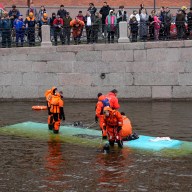Balls, bollocks, nads, testicles — we spend enough time using them as a figure of fun, yet men are often reluctant to talk about them in any serious capacity — especially when there’s a problem. Talking about it makes men feel emasculated, a pubic hair’s width away from confessing to being a eunuch. Well, that mentality is slowly changing, thanks to education, advertising and of course, the annual Movember moustache grow-off, which raises awareness globally of both testicular and prostate cancer.
Dr. Sneh Khemka, medical director at health insurance plan Bupa International, is fondly known as Dr. Movember. Here, he gives us a rundown on men’s cancers.
Testicular cancer
Who’s at risk?
It mostly affects men between 20-30. It’s very rare for men over 50. Caucasian males are more likely to suffer, but other factors include family history, fertility issues and people who have had a complication related to mumps called orchitis.
The symptoms:
Often it’s asymptomatic, but you may experience the following: a collection of fluid in your scrotum that causes swelling (a lump), anal discomfort (this can spread to the groin or lower abdomen) and a pulling sensation like you’ve been kicked.
The treatment:
The most common treatment is surgical removal of the affected testicle.
Can this cancer spread or return?
If the cancer has spread, you may require adjunctive radiotherapy or chemotherapy, depending on whether it has affected the lymph glands. However, when the affected testicle has been removed, it is unlikely to return in the other testicle.
Are there any options aside from surgery?
It’s very rare to catch it early enough to avoid surgery. If the cancer is just being treated with chemotherapy or radiotherapy, then it does have a higher rate of return — which is why they usually just remove the testicle.
Common misconceptions
Myth: Testicular cancer affects older men.
Truth: It’s one of the few cancers that affects younger men.
Myth: If you have one testicle, you can’t have kids.
Truth: You’re just as able as men with two balls.
Testicular cancer is incurable.
Truth: It’s very treatable.
You get testicular cancer from cycling, because Lance Armstrong had it.
Truth: There’s no evidence for this.
Check yo’self!
If testicular cancer goes untreated, it can spread — especially to the bones, local organs and liver. It’s a fairly aggressive cancer with a very poor survival rate if left untreated.
It’s therefore crucial for you to check your testicles every month or two. It only takes a few minutes.
How to do it
Use your dominant hand and gently squeeze your testicle in between the pulp of the forefinger and the thumb, and methodically go around the testicle from the top down to the bottom, around one side and back up the other side.
A note on lumps
Any lump will be pretty apparent, and it’s normal to find a small lump on the top back aspect of the testicle — that’s called the epididymis, where the sperm is stored. That little bump there is perfectly normal.
The final word
What you need to get used to is what your testicles feel like normally. There’s no shame or harm in going to your doctor or getting an ultrasound test.
Get looked at
It’s not the most pleasant thing in the world, but a rectal examination is the best way of accessing the prostate. A doctor can tell pretty quickly with a rectal examination and a simple blood test called a PSA (Prostate-Specific Antigen) if something’s lurking in your prostate
Per “Mind Over Manhood: The Misconceptions of Prostate Cancer,” a recent survey of men conducted by Wakefield Research on behalf of Janssen Biotech Inc., many men could not identify some of the common ways that the disease manifests. An overwhelming majority (93 percent) could not recognize at least two of these symptoms — urinary problems, erectile dysfunction, frequent lower back pain, infertility, swelling of the legs and feet or weight gain — as potential signs of prostate cancer.
Less than a quarter correctly identified lower back pain as a symptom.
Prostate cancer
Who’s at risk?
Prostate cancer tends to affect much older people and non-Caucasians are at a greater risk. It usually happens in people over age 50, and the main symptom is a problem with passing water.
Symptoms include:
Difficulty in starting to pass urine
A weak flow of urine, sometimes intermittent
Terminal dribbling where you have difficulty stopping the stream
Visiting bathrooms more frequently, especially at nighttime
In very rare circumstances, blood in your urine or semen
The treatment:
A common treatment is radical prostatectomy where the entire prostate and some of the surrounding tissues and lymph nodes are removed. There’s also a new technique being trialed called H.I.F.U. (High Intensity Focused Ultrasound), where a small probe that’s inserted through the rectum heats up and kills cancerous cells.
Can this cancer spread or return?
It usually spreads to the local lymph nodes, hips, spinal canals, spinal bones and further down. If it has spread, men will often experience lower back pain and pain in the pelvic area.
















